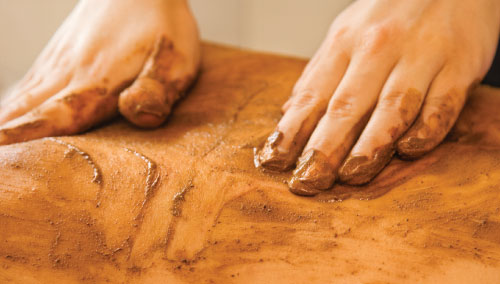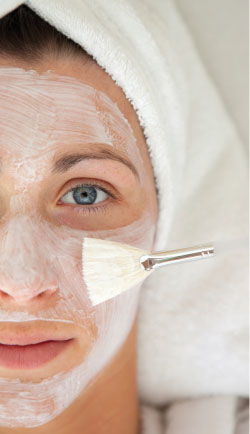Books have been written on skin permeability and obtuse descriptions of the mathematics of permeation and diffusion have been laid before their readers with great erudition. All of this is great if you can understand it, but for the aesthetician struggling with basic mathematics and a limited knowledge of physics, it becomes quite tough. Unfortunately, you cannot get by as an expert in skin care without a really good grasp of this subject, so give this section a good, honest try before you "throw up your hands and run out screaming."
Remember this:
Just about everything can, and will, penetrate the skin. If you do not believe this, put a small stone in you shoe and walk around. If you can stand the pain, you will find that in due time it will be well up into the sole of your foot. Diabetics with peripheral neuropath – no feeling in the foot – do, in fact, experience this type of injury. So begin with the premise that everything goes into the skin.

Basics of Skin Penetration
Skin penetration is mainly a mechanical process with some chemistry involved. As such, it obeys basic laws of physics and the laws of chemistry. Skin is composed of water, lipids and proteins on the inside, and everything else on the outside. If you jump into a pool of water, the water will try to get into your skin, not because it "wants" to, but because it must. This follows a basic rule of physics – the law of mass action. This law says things will inevitably move from a high concentration to a low concentration unless energy is applied to slow or reverse the process.
Example: The body is 70 percent water; the pool is 100 percent water. Which way will the water go? Materials penetrate the skin by a process called passive diffusion; "passive" means there is no force driving the material other than concentration. How fast the material goes into the skin is called the rate of penetration. Rate always has a dimension of time, such as miles per hour. In the case of water going in and out of the skin, milligrams per square centimeter per hour are the measurement units used. This is written as mg/cm2/hr, though some skin scientists like to use grams per square meter per hour, or g/m2/hr.
The Need to Dissolve in the Stratum Corneum
The amount of an ingredient that passes into the skin, or into the stratum corneum, depends on two factors. The first is the solubility of the ingredient in the product vehicle, and the second factor is the solubility of the ingredient in the stratum corneum. In most cases you will never know these two values because they are not listed on the label and, in fact, it is not known if any cosmetic company does these tests, though at one time the major companies actually did some of them. You can, however, use two values to predict the penetration of ingredient into the skin – the concentration of the ingredient in the vehicle, or Cv; and the concentration of the ingredient in the stratum corneum, or Csc.
What you want to do with treatment actives is to maximize the movement of the ingredient from the vehicle into the stratum corneum, called partitioning of the ingredient, or km. All of this sounds elementary, but the fact is that you need to understand this if you are going to use skin care products intelligently and effectively. It does not matter a hoot what the concentration of the ingredient in a product is if it will not dissolve in both the vehicle and in the stratum corneum. The simple relationship between these parameters is km – Csc/Cv.
Factors Involved in Penetration
Only a small amount of what you apply to the skin will partition into the stratum corneum since topically applied ingredients are poorly absorbed. Most of the ingredient remains on the skin surface, subject to loss from such factors as exfoliation, sweating, wash-off, rub-off, absorption to clothing, and chemical or photochemical degradation. Up to 10 to 12 hours following dosing, an ingredient that has not been lost by exfoliation or rub-off remains largely on the skin surface and can be removed easily by a simple soap and water wash.
You can improve this dismal outlook by a number of physical and chemical factors. Simple hydration of the skin from occlusion (or as in areas such as the groin where it occurs naturally), expands the volume available to chemical agents with the stratum corneum and can increase absorption as much as five- to ten-fold. A few common additives that are not considered active ingredients, such as ethanol and propylene glycol, are able to alter the barrier structure in a way that increases partitioning. They have good solvent properties and, therefore, have a positive effect on Cv as well as km. There is a limit to using propylene glycol to maximize bioavailability, however, since high concentrations can cause burning and stinging when applied to fissured or eroded skin. Generally concentrations from 5 to 10 percent are safe.
Other compounds have been used as enhancers of penetration, such as dimethylsulfoxide (DMSO), the most effective enhancer known. It is a very good solvent, but it also expands the barrier to permit both increased ingredient uptake and an increased rate of diffusion through the barrier. For the most part, it works like ethanol and propylene glycol, in that both Cv and km are affected. What all of this means is that you can increase penetration of an active ingredient both by hydration of the skin and by barrier perturbation.
Keep in mind that all body sites are not equally permeable. Regional variation in stratum corneum thickness, number of sebaceous glands and hydration status affect absorption. The nails and palmoplantar skin (palms of hands and soles of feet) are sites with low permeability due to the thickened horny layer and absence of sebaceous glands. Skin on the lower back also has few sebaceous glands and is therefore less permeable. Areas of higher permeability are the face and scalp, due to the presence of a large number of sebaceous glands that act as shunts for diffusion. The groin area (known as intertriginous area) is wet, warm and occluded, and thus a good area for penetration. Skin thickness is least on the eyelids and the testicles and greatest on palms and soles.
 The Face and Penetration
The Face and Penetration
Aestheticians spend the greatest part of their time working on the skin of the face. Here are some facts that may help you in treating the face. The face is very vascular; it has plenty of blood, and many sebaceous glands – more on the nose and forehead than on the cheeks. The thickness of facial skin varies, with forehead area skin thicker than that on the cheek.
Whatever is put on the skin must get through the stratum corneum first. To do this it must dissolve in the matrix of lipids and proteins. Science has put a name and a number on this process and calls it the solubility coefficient. You need only know that, if what you are trying to get into the skin is not lipid-soluble, you are going to have a harder time getting it through the stratum corneum. Why is this important? If you are using a gel, for example, with water-soluble vitamin C, you will have to apply a lot of vitamin C to get just a little into the skin. On the other hand, if you use a penetration enhancer like propylene glycol or oleic acid in the formula, it will provide entry channels in the stratum corneum that will allow more vitamin C to get into the skin. Wetting the skin before applying a product will also enhance penetration. As mentioned above, you can get more than twice the amount of an applied substance into moist skin than you can get into dry skin.
Consider that the face has many hair follicles with sebaceous glands and sweat gland, all of which provide channels into the skin. There is a misconception about the nature of a pore. It is not a hole in the skin; it is an opening onto the skin's surface from a gland below the skin. The idea that pores are needed for the skin to breathe is just ridiculous. It is appalling that such nonsense is still being taught in aesthetics schools. The significance of the pores for the skin penetration is that they do provide a channel through the epidermis into the dermis.
The Face and Skin Sensitivity
There are extremely few women who do not claim to have sensitive skin. There is no clear definition of sensitive skin, though quite a few articles have been written on the subject. One interesting concept is that sensitive skin always is made, not born. Except for those conditions associated with an immune problem such as atopic dermatitis and a few others. Sensitive skin results from three factors: Environment insults, too much soap, and too many cosmetic products.
Consider for a moment that soap dehydrates skin, pulling out lipids, which then allows many things to pass into the skin that would otherwise be blocked by the lipids. Next consider that a cosmetic product can contain 12 to 25 ingredients, all of which are more or less active chemicals. If you use just four products a day on the skin, you may be applying as many as 48 to 100 chemicals on your skin. No one alive can possibly know what effects these chemicals will have on the skin, either singly or combined. If your clients have sensitive skin, advise them to stop using soap, and to reduce their facial protocol to one or two products at the most. A simple fix, but quite effective.
Peter T. Pugliese, M.D. has been the undisputed pioneer of cosmetic research, formulation, and education in the field of skin health. He has spent more than 50 years dedicating his life to research and science. His research in the field of anti-aging and skin physiology has given him numerous awards, patents, and discoveries which have influenced the course of professional skin care around the globe. Pugliese has contributed chapters to over a dozen books and published over 60 scientific papers. He has authored four books, including, in 1990, the first textbook written for aestheticians by a physician, Advanced Professional Skin Care, to bridge aesthetics and medicine with a common language. His newest publication is Advanced Professional Skin Care – Medical Edition.
Want to read more?
Subscribe to one of our monthly plans to continue reading this article.